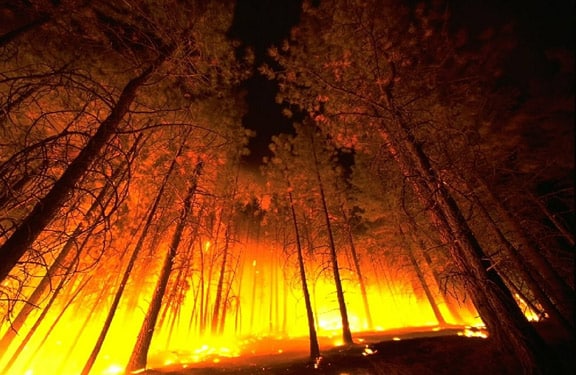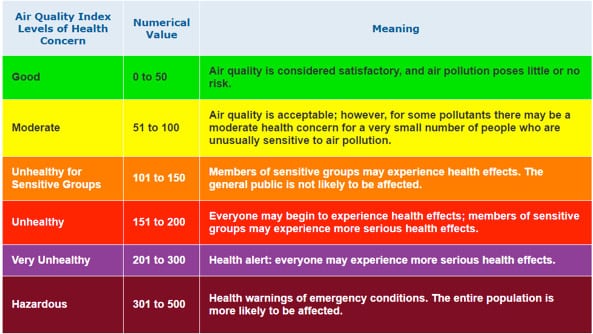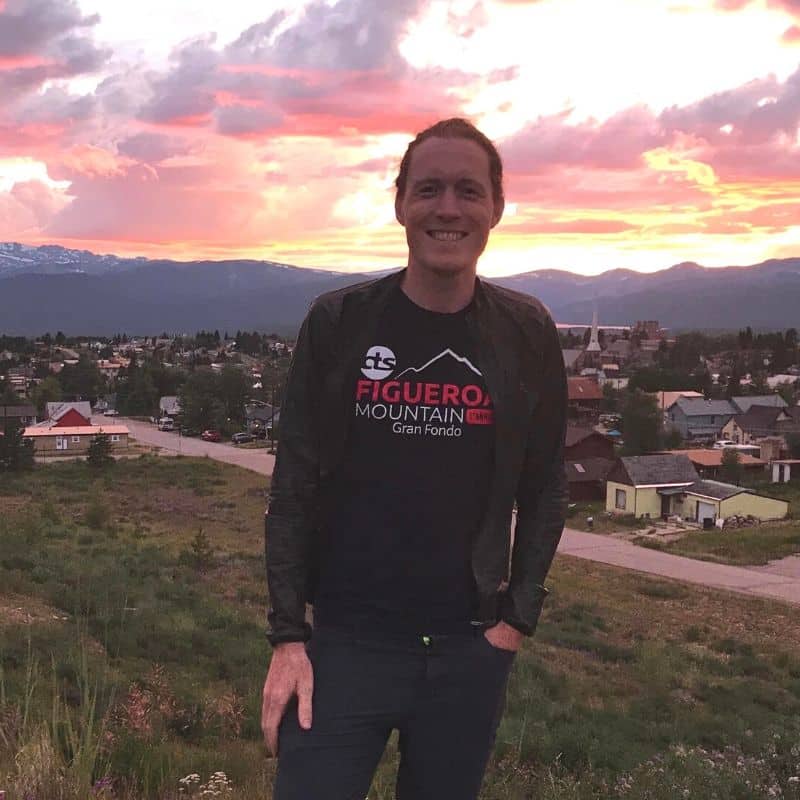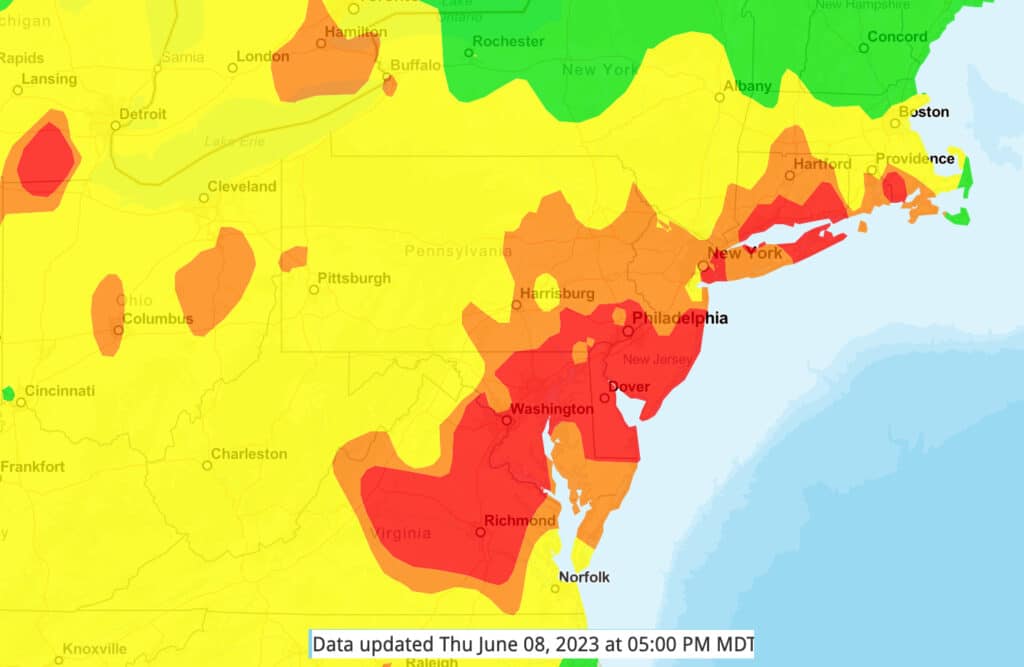
Adjusting Outdoor Exercise for Air Pollution and Wildfire Smoke
We are all aware that exercise is beneficial to our health, but exposure to air pollution isn’t. Harmful particles end up in your lungs causing irritation, inflammation, and can microscopic particulates can potentially enter the bloodstream. This can cause an increased risk for serious medical issues, including heart attack and stroke. What are athletes supposed to do when there is air pollution? We’ve outlined a few tips to help you make the most of your training plan while dealing with these conditions.
Assessing Air Quality
Allergens in the air are tracked on most weather outlets. Weather.com provides an allergy forecast as well as the different allergy triggers that are forecast to be present. You can look up you own area using the Allergy Tracker on https://weather.com/
How you approach training with different allergens in the air will be very individual. If you are someone who is affected by allergens you should be aware of the conditions that might put you at risk, and plan ahead before training. Reduce exposure, training intensity, and the duration of your outdoor training, and let someone know where you are training if you are susceptible to asthma attacks. Particulate matter and ozone are ranked on Air Quality Index on a numerical scale between 0 and 500. Know the air quality in your area by checking https://www.airnow.gov/.
Source: Airnow.gov
Good & Moderate Air Quality
Athletes can breathe in 10-20x more air than a sedentary person during a given period of time. This also means you are breathing in a lot more particulate pollution. If the air quality in your area is ranked as “Good” or “Moderate”, air quality should pose no risk for anyone, including athletes.
Unhealthy for Sensitive Groups
The “Unhealthy for Sensitive Groups” rating is described as “the general public not likely to be affected.” However, the EPA adds, “People with heart or lung disease, older adults, and children should reduce prolonged or heavy exertion.” At this risk level, it is advisable for all athletes to pay attention to the conditions, time of day, wind direction, and exercise intensity. Sensitive people should include those with asthma. People with asthma should pay special attention to the conditions, listen to their bodies, and carry a rescue inhaler.
Unhealthy Air Quality
The “Unhealthy” level is a point when “everyone may begin to experience some health effects.” The EPA says, “People with heart or lung disease, older adults, and children should avoid prolonged or heavy exertion. Everyone else should reduce prolonged or heavy exertion.” At this risk level, you should be highly attentive to the conditions, move activity to times when air quality is better, take frequent breaks during activity, and consider taking a rest day or training indoors.
Very Unhealthy and Hazardous
At the “Very Unhealthy and Hazardous” category “everyone may experience more serious effects” and the “entire population is more likely to be affected.” You should avoid all physical activity outdoors and reduce any amount of exposure by staying indoors as much as possible. You should also take steps to reduce the amount of pollutant that is in indoor air.
 Source: Airnow.gov
Source: Airnow.gov
Pollutant-Specific Exercise Recommendations
Wildfire smoke, smog in dense urban areas, and even allergens each bring their own unique challenges when planning training outside.
Smoke
When dealing with wildfire smoke, wind direction plays a pivotal role. On a recent day near our Brevard, North Carolina, training center the air on the up-wind side of a local fire appeared as any regular day, while the air on the other side of the fire was dense with irritating smoke many miles from the fire. A check of weather visible satellites, as well as wind direction, can help you plan a route that avoids the downwind smoke. Checking news outlets for updates on the fire’s growth, area affected, and any road closures is also a necessary step. When in doubt: don’t put yourself into a dangerous situation, stay closer to home, and let someone know where you are going.
Smog
Smog tends to be worse in the afternoons when temperatures are higher and there is more traffic on the roads. During these times of the day there is more particulate matter in the air, and more energized compounds that increase the negative effects of exposure. For those reasons, if you are in areas prone to smog it is best to exercise early in the day or late in the afternoon when it is cooler. Also, try to avoid congested, high traffic areas. Ride or run on trails or in rural areas if possible.
► Free Cycling Training Assessment Quiz
Take our free 2-minute quiz to discover how effective your training is and get recommendations for how you can improve.
Allergens
Allergens typically peak in spring and fall depending on your latitude and the growing season. Those with seasonal allergies can usually continue to train uninterrupted through an allergy season using over the counter medications. If allergies can get bad enough that they influence your ability to train you might find better quality training indoors in filtered air.
Exercising in air pollution should be approached with caution. Keep in mind that high-intensity exercise requires deep and forceful breathing. If you do have to train outdoors, be picky with where and when you train in order to reduce exposure and reduce your intensity and duration if you can’t escape harmful pollutants. Training in clean indoor air will allow you to maintain intensity and high-quality training.
Think Big Picture
Forest fires thankfully tend to be relatively short-lived, and shifting your training indoors is the most effective way to continue exercising while reducing your exposure to particulate pollution. If you do train outdoors with a forest fire nearby, keep intensity low to moderate (endurance pace) to reduce the irritation. You can also just take some rest days and volunteer to help out with those more acutely affected by the fires.
Missing a little training is not going to be the end of the world. In contrast, athletes who live in areas prone to smog need to figure out how to deal with it on an ongoing basis. You may need to adjust your schedule for prolonged periods of the year, or permanently, in order to train outdoors at times of day when air quality is better. The more intense your workout the more you will be affected by poor air quality, so consider moving interval workouts indoors during periods when air quality is especially poor.
What about masks?
When we had bad forest fires near the locations where a lot of of CTS Coaches live and work, including Colorado Springs, Western North Carolina, and Central California, some coaches and athletes tried using masks or cloth (like a bandana) over their mouth and nose while exercising outdoors. While covering your mouth and nose probably reduces the amount of particulate matter your breathe in, if the air quality is so bad that you think a mask is necessary then it is probably bad enough that you’re better off training indoors or taking a rest day.
Be safe and breathe easy!
By Reid Beloni, CTS Senior Coach
Resources:
https://www.ncbi.nlm.nih.gov/pubmed/15367733
https://www.airnow.gov/index.cfm?action=aqibasics.aqi#sens
► FREE Mini-Course: Learn How to Maximize Your Limited Training Time
Learn step-by-step how to overcome limited training time and get faster. Walk away with a personalized plan to increase your performance.
"*" indicates required fields



Comments 8
çiçek siparişi
windows 10 love you
Living in western Canada, we deal with wildfire smoke every summer. I have used a 3M n95 disposable respirator mask with a vent. The vent allows you to expel air quickly without breaking the seal around your face. I also wear these on the plane to avoid getting sick…
https://www.3m.com/3M/en_US/p/d/v000057815/
Firesmoke.ca has an animated map of the smoke forecast.
Pingback: Exercise and Air Pollution: Training and Racing When Air Quality is Poor - CTS
I like how you mentioned that one of the most important things to know is exercise is important to our health. My cousin mentioned to me last night that he wants to go to a smog check inspector training for his career and asked if I have any idea what is the best option to do to start. Thanks to this informative article and I’ll be sure to tell him that it will be much better if he consults a well-known quality training class as they can answer all his inquiries and will guide him throughout the process.
I’m curious if elevation is a variable on the affects of the pollution?
While it is generally taken into consideration as part of “air quality” measurements, I don’t see any specific mention of ozone here. This is a significant problem in many parts of the country, and certainly was an issue in the Sierra Nevada foothills where I lived and cycled for a decade. There were hot days with beautiful clear skies, but also a significant ozone problem. No mask will filter that out, and I’m not sure moving indoors helped much either. If air quality readings, particulate or ozone, are in the unhealthy range, just find something else to do that’s not so aerobic. You won’t die from taking a few days off.
Very timely as I live in Chattanooga, TN and we’ve had some very bad days here the last month. One day can be somewhat OK (orange), but if the prevailing winds turn it’s not good (red) to be outside. Reduced outside exposure and carrying my rescue inhaler has helped. Good info here.